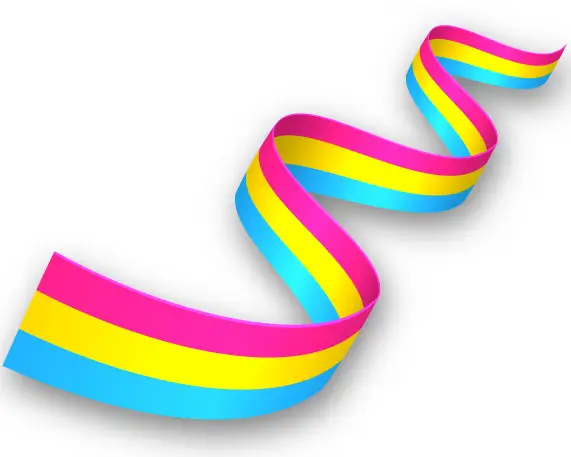As a prevalent segment of the LGBTQ+ community, pansexual people are those who experience attraction towards individuals of all gender identities. This means they can feel a romantic or sexual pull towards people who identify as male, female, transgender, non-binary, or any other gender identity. Pansexuality, as a sexual orientation, embraces the fluid nature of gender, moving beyond the traditional binaries to encompass the entire spectrum of identities.
On the other hand, individuals who identify as bisexual are often misinterpreted as having a similar mode of attraction. However, it’s crucial to delineate the distinction between bisexuality and pansexuality. Bisexual people are attracted to people of both their own and other genders. Although this can mean two or more genders, it does not necessarily incorporate all genders as pansexuality does. The difference lies in the focus; while bisexuality acknowledges the gender of the person in terms of attraction, pansexuality looks beyond the binary, encapsulating the spectrum of diverse gender identities.
Understanding Pansexuality: What Does It Mean?
Pansexuality, unlike heterosexuality, denotes a sexual attraction that encompasses people of all genders. Individuals who identify as pansexual experience attraction to people regardless of gender. This includes those who conform to traditional binary genders of male and female as well as those who identify as nonbinary. This capacity for broad attraction places pansexuality as a significant element within the spectrum of sexual identities.
However, pansexuality is a term often confused with bisexuality. While the word bisexual implies an attraction to two genders, male and female, pansexuality expands this notion to people of any gender. Hence, someone who is pansexual might feel a romantic or sexual attraction to males, females, transgender individuals, genderqueer people, and so forth, redefining boundaries of sexual attraction regardless of societal norms. Thus, pansexuality showcases the fluid and inclusive nature of human attraction.
Exploring Bisexuality: A Comprehensive Guide
Bisexuality, typically defined by the prefix ‘bi’, essentially stands for ‘two’. However, when it comes to bisexuality, ‘two’ doesn’t necessarily restrict itself to the traditional gender binary of male and female. People who identify as bisexual are diverse in their patterns of attraction and may feel romantic attraction to people across a wide spectrum of gender identities. Subsequently, the notion of bisexuality excluding non-binary or transgender people is a misconception, as the ‘two’ in bisexuality can also be interpreted as same and different genders.
This inclusive view has been widely accepted and promoted within the bisexual community. The term ‘bisexual’, therefore, isn’t constrained to the notion of two genders but includes people regardless of their gender identity. While bisexuality does recognize the existence of a gender binary, it does not limit its definition to it. This open interpretation reflects the fluid nature of sexuality, hinting that sexual orientation can move beyond societal norms, acknowledging and respecting a diverse range of identities.
Bisexuality: Beyond the Binary and Embracing All Genders
- Bisexuality is not limited to attraction towards male and female genders: The term ‘bisexual’ may suggest the presence of two distinct entities, but it does not necessarily mean that these entities are strictly male or female. Individuals identifying as bisexual can experience romantic feelings for people who identify across a broad spectrum of gender identities.
- Misconception about bisexuality: A common misunderstanding is that bisexuality excludes non-binary or transgender individuals. This perception is incorrect; the ‘two’ in bisexuality could also refer to attractions towards the same and different genders.
- Inclusive view within the bisexual community: The broader interpretation of bisexuality has gained acceptance within its community. It acknowledges that people’s sexual preferences can extend beyond traditional gender binaries, embracing all regardless of their gender identity.
- Recognition of gender binary in bisexuality: While acknowledging a wider range of attractions, bisexuality also recognizes the existence of a traditional gender binary – male and female. However, this recognition does not limit its definition only to these two categories.
- Fluid nature of sexuality: The open interpretation provided by bisexuality reflects on sexuality’s fluid nature. It suggests that sexual orientation isn’t rigidly bound by societal norms but can evolve, recognizing diverse identities with respect and understanding.
Pansexuality vs. Bisexuality: Key Differences and Similarities
The terms “bisexuality” and “pansexuality” are often used interchangeably. However, they have distinct differences that are important to comprehend. Individuals who identify as bisexual may very well be attracted to multiple genders, but they usually express a preference for men or women. This means they typically recognize and appreciate the binary gender spectrum, expressing attraction to people of more than one gender but not necessarily all. Key to this identification is their attraction to both their own gender and others, but this, however, does not signify an attraction to all genders.
In contrast, pansexuality, also known as omnisexuality, encompasses an attraction to people regardless of their gender identity or biological sex. This includes cisgender, transgender people, and people of all genders. Pansexual individuals choose to identify under this label because it articulates a clear recognition and potential attraction to people across the broad spectrum of genders. In essence, while some bisexual individuals may also experience this type of attraction, the defining factor of pansexuality is the potential for attraction to any gender or, as some describe it, attraction to individuals irrespective of gender.

The Fluidity of Gender and Sexuality
The complexity of human sexuality goes beyond conventional binaries, opening up to a full spectrum of diverse experiences and identities. With more understanding and acknowledgment of this diversity, many bisexual and pansexual individuals are redefining the way we talk about attraction and orientation. These people regard attraction as something that can apply to people regardless of gender. They are pushing the boundaries of heteronormative perspectives, which primarily involve cisgender men and women, showcasing that love and desire can stretch beyond these traditional confines.
One key aspect of this diversity lies in how people identify. Some relate to two or more genders, thus identifying as bisexual and others feel an attraction that doesn’t consider gender, identifying as pansexual. The distinction and overlap between these identities constitute a significant part within the cognizance of fluid sexuality. The difference between bi- and pansexual often hinges on the spectrum of attraction they epitomize. While bisexuality implies a potential attraction to two or more genders, pansexuality suggests an attraction beyond gender—meaning you’re attracted to people without placing precedence on their gender identity. This acknowledgment and acceptance of fluidity in gender and sexuality underscore the importance of personal definition, paving the way for a more inclusive understanding of human sexual behavior.
Queer Identities: Pansexual, Bisexual, and Omnisexual Explained
The term pansexuality is becoming an increasingly visible part of the spectrum of sexuality. This identity encapsulates those who experience attraction to all genders. It transcends the bounds of binary gender identities, appreciating the rich diversity of human expression in terms of gender and sexuality. The term bisexual, often used interchangeably with pansexuality, denotes attraction that is not limited to one gender. It fosters inclusivity by acknowledging the existence of more than two genders. The Bisexual Resource Center offers excellent support and education for bisexual and pansexual individuals, helping them understand their desires and identities.
While the words pansexual and bisexual often seem synonymous, threading these terms further uncovers some fascinating distinctions. One crucial factor in pinpointing the real difference between bisexuality and pansexuality lies in the focus. Bisexuality traditionally looks to gender as an important element of attraction, whereas pansexuality tends to disregard gender altogether. This slight nuance in interpretation is experienced differently among pansexual and bisexual individuals. However, it’s imperative to note that the definition of these terms may vary widely among queer and pansexual communities, representing different shades and flavors of human sexuality.

How Different Genders Impact Sexual Identity
In understanding sexual identity, it’s imperative to recognize how diverse experiences and identities influence personal feelings of attraction. Pansexuality is defined as the romantic or sexual attraction toward people regardless of their gender or gender identity. This means that pansexual people may not only be attracted to males and females, but also those who identify as non-binary, genderqueer, or under other gender identities. For these people, identifying as pansexual reflects their ability to form attractions beyond the binary constructs of gender.
Bisexuality, similar to pansexuality, means having an attraction to both males and females. The definition of bisexual, however, historically connotes an attraction to two genders, typically male and female. Today, many people who identify as bisexual affirm that they can also be attracted to a range of gender identities, somewhat like pansexual individuals. Despite the commonalities, the distinction lies in the degree of gender’s influence on an individual’s sexual attraction. While some might experience gender as less significant, as if they might be pansexual, others maintain that gender is a crucial aspect in shaping their attractions. The complexities of these identifiers underscore that everyone’s experience with sexuality is personal, and definitions continue to evolve.
Identifying as Pansexual: Embracing Attraction Beyond Gender
Despite many people being familiar with individuals who have “come out” as bisexual, it is critical to realize that this is not the only label encompassing the attraction to multiple genders. Enter pansexuality: a term coined within the queer community to represent sexual and emotional attraction to people of any gender identity. While bisexuality hints at the possibility of attraction to more than one gender, pansexuality expands this concept to include the attraction to all genders. This notable difference sets apart these two sexual orientations.
The interplay between gender and sexual identity is a complex facet of human nature. Some might find themselves attracted to people of the same gender, others may identify with more than one gender, and still others, as is the case with pansexuals, may experience attraction to people regardless of their gender. This broad approach to sexuality is not only embraced by pansexuals. Still, it has also garnered strong support from bisexual activists advocating for further understanding and acceptance across the spectrum of sexual identities. It’s a reminder that sexuality, much like gender, is a fluid construct, free from strict binaries and restrictions.

Embracing Bisexuality: Understanding Attraction to More Than One Gender
Bisexuality, as the term suggests, means more than one – an attraction to a person associated with more than one gender. However, there seems to be still a lot of confusion surrounding this inherently plural word. While many believe that bisexuality signifies attraction to only two genders, namely cisgender men and women, it’s crucial to dispel this misunderstanding. The reality is, bisexuality, like every other sexual orientation, isn’t confined to a narrow definition. It is fluid, allowing individuals to be attracted to all people across the gender spectrum, including but not limited to cisgender, transgender, non-binary individuals, and more.
People are attracted to people, not necessarily your classification or category. What compels human attraction varies from person to person, encompassing dimensions beyond physical appearance or gender identity. The identification as bisexual doesn’t encase individuals into rigid partitions of attraction. Instead, it allows fluidity and acceptance, allowing individuals to identify with whatever orientation they resonate with the most. It’s important to remember that there isn’t a right or wrong answer in terms of one’s sexual attractions. What matters is that everyone has the autonomy and space to know oneself better, without the societal pressure to conform to a binary mold.
Conclusion: Navigating the Spectrum of Sexual Identities
In deciphering the complex spectrum of sexual identities, many individuals may identify with multiple terms. This fluidity in self-definition allows for an inclusive exploration of one’s sexual identity, fostering acceptance and understanding. It might be difficult to fathom for those who have not delved into this complexity. Still, the intricacy of human sexuality extends far beyond conventional labels of heterosexual, homosexual, or even bisexual. Examining pansexuality and bisexuality offers a more nuanced perspective on attraction, showing it’s more about the person than the gender.
On the other hand, how people use the terms bisexual and pansexual can differ greatly, reflecting the diversity and fluidity within these communities. It’s important to note that deconstructing these terms helps us understand that humanity’s capacity for attraction changes and evolves, never fitting neatly into a single, static category. It also recognizes the potential to be attracted to all genders, testifying to the depth of human experience. Hence, our society needs to engage in conversations about these sexual identities to further acceptance, fostering empathy and reducing prejudice.
Share this article
